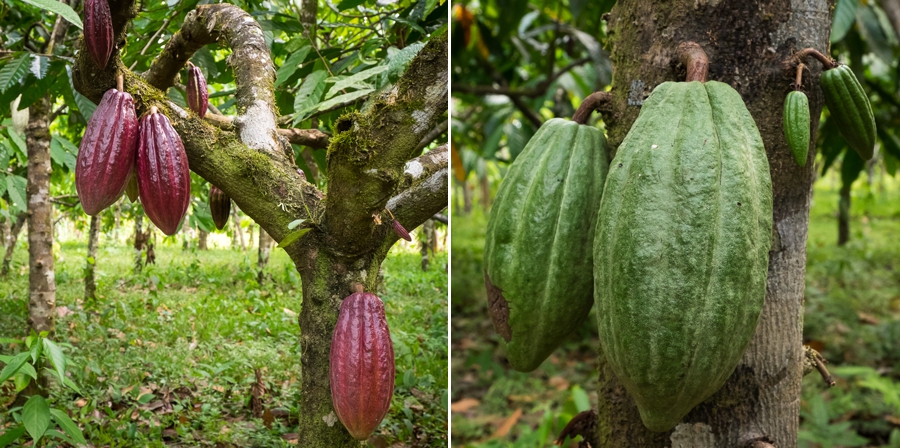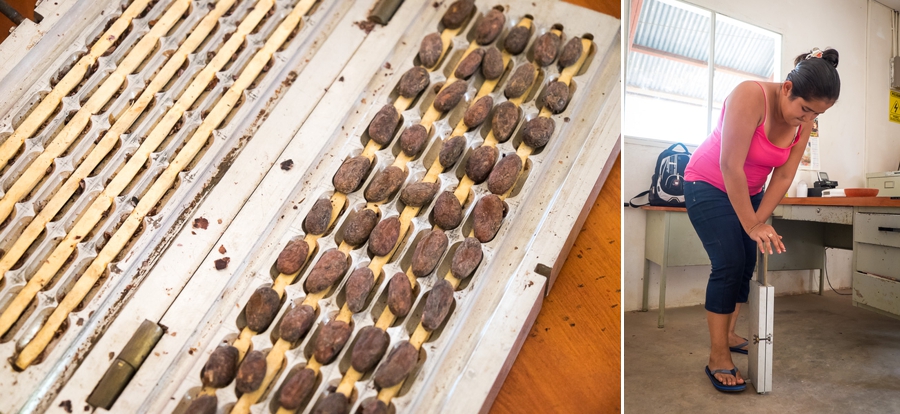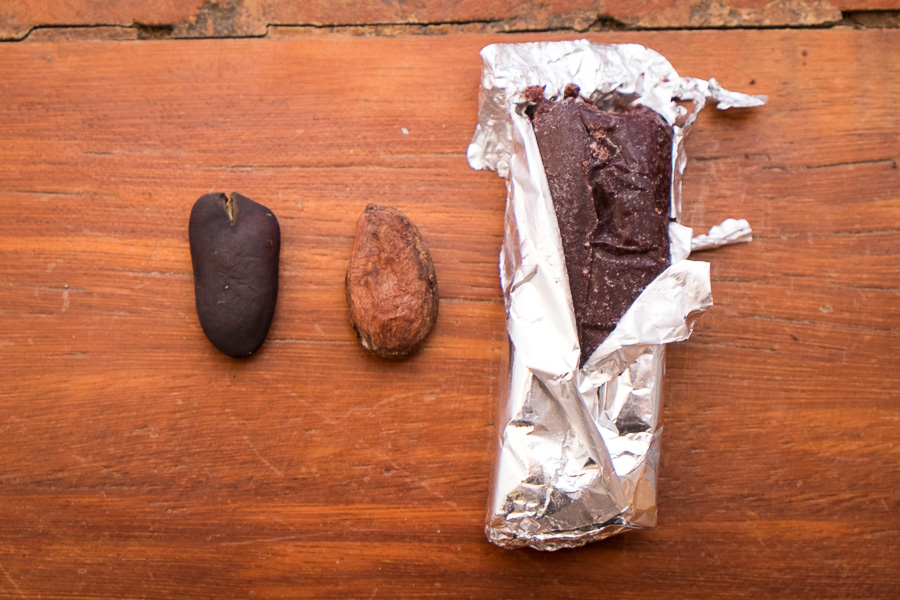Stayed at the Hotel Sábalos for 2 nights on my way back up the river to San Carlos. I highly recommend it if you are going to stay at Boca de Sábalos – Maricela is wonderful and friendly, first warm shower I’ve had in 2 weeks, the fried fish and the pancakes are amazing and its actually relatively cheap!

One of the things the Río San Juan has become famous for over the last little while is the production of cacao – the raw ingredient that forms the basis of chocolate (ok, not white chocolate, but other forms of chocolate). There are several cacao tours you can do from Sábalos or El Castillo, but travelling solo they are quite expensive. However, on my second night at the hotel I overheard a newly arrived group arranging a cacao tour for the next morning and I asked if I could tag along.
Headed slowly up the Río Sábalos at 8am with Julio as our guide passing a massive barge with two huge tanks to transport palm oil, another product of these parts. It really stood out as by far the biggest boat I’d seen on the river.

The cacao finca we were visiting was “La Salvadora”, an organic finca that supplies cacao for export to Ritter Sport in Germany. Julio led us through the finca explaining the key elements of cacao production.

- The cacao tree lasts for about 45 years
- It takes 3 years before it gives its first fruit
- The best harvests are in its first 10 years. After that the tree starts to produce less fruit
- Cacao grows all year round, and at this finca they tend to do a wander through the trees every 15 days to pick the ripe fruit
- Cacao is a shade crop and therefore requires other trees to also be planted to provide that shade. At this farm they plant very quick growing banana trees with the new cacao trees to give some instant shade, but also have mango trees, guava trees (but not the fruit we are used to), and another fruit that belongs to the custard apple family, amongst others. These have the added bonus of distracting birds and other animals (including humans) from eating the cacao (they prefer the sweeter fruit).
- There are 3 types of cacao, two of which were grown here. The green cacao (forestero) turns yellow when ripe, the reddish-brown cacao (criollo) turns orange when ripe.

Inside the cacao fruit the seeds are covered in a slightly sweet pulp which tastes absolutely nothing like chocolate at this stage. Yes, you can eat it 🙂

From there it was back up the river to the cacao processing facility. To produce high quality chocolate, the cacao first has to be fermented – for ~4 days the pulp-covered seeds are stacked in trays covered in plastic to start the process. They are then uncovered (at this stage they are still very sticky with the vestiges of the pulp) and start to dry out under shade for another few days (left) before being moved to further drying sheds where they complete the drying process (right). Unfermented cacao seeds are really quite bitter, whereas the dried, fermented seeds start to taste like high percentage dark chocolate.

From there they are tested for quality – 50 beans are selected and put into a special slicing tray.

Once they’ve been sliced, they are inspected to check what percentage haven’t completed the fermentation process enough to be Grade 1 quality and whether they have any fungus (a problem during the rainy season which manifests as white in the centre of the seed). If more than 5% are not fermented enough (left bean isn’t fermented properly, right bean is) or there is any fungus, the quality of the batch is not good enough to be exported to Ritter Sport, and instead is made into chocolate here in Nicaragua and sold locally.

The last part of the tour was to roast the fermented beans and grind them to form up chocolate or make chocolate powder. What would you use to do this? A sandwich maker of course!

The final toasted bean (middle) tastes very close to very dark chocolate (right, locally made) and is a long way from the initial seed we started off with (left).

If you are interested in seeing the process of chocolate making from beginning to end, a cacao tour is definitely worthwhile if you are in the area.